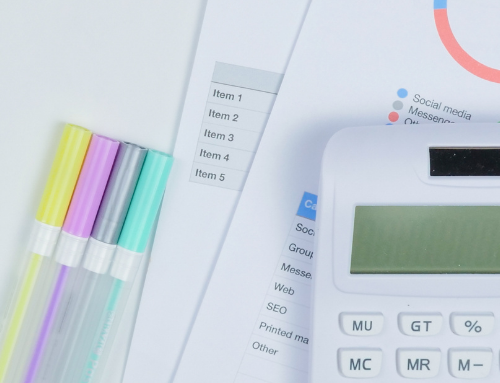In our exclusive UM Club Episode, Investing 101 with Jared Webb Financial Planner from Design Wealth, we covered a lot of things, and today we’re back with a breakdown of how to start investing and types of investments. We’re talking about how to invest, what to invest in, and how to find the right fit for you – not to mention breaking down the many acronyms around finance!
Want to know even more about types of investments and financial literacy? Join the UM Club for the exclusive episode mentioned above and many more like it!
Related Articles
Investing 101 with Financial Planner Jared Webb
Making Money and Financial Empowerment with Business Coach Melissa Rogers from Self-Made Mama
Mortgages 101 with Mortgage Broker Rebecca Casey
Estate Planning with Beverly Carter
Conversations About Money with Kaila Pilecki

How Should a Beginner Start Investing?
Now that you’ve decided you’re ready to start investing, it’s time to look into what your goals with investing are, what your risk tolerance is, and what types of investments are right for you.
What is your goal with investing?
One thing that’s super important before you start investing is setting up an emergency fund (or a foxy pocket as we like to call it). This is your rainy day fund for in case anything happens, and is super important for us as parents with how uncertain the world is today.
Now after this you’re probably thinking “but what about my debt?” Not to worry, you can still invest when you have debt, you just have to be money conscious. That safety blanket fund mentioned above is super important for this step, so make sure to secure that first. The other thing to remember when investing with debt is that we need to keep focused on paying that debt off, regardless of how well our investments are doing. Keeping an eye on your credit card bills is very important, and make sure you’re paying of any high interest bills as soon as you can.
When we start investing there’s a few different timelines we need to look at. For short-term, thats around one to three years, put your money into the bank with things like GICs (Guaranteed Investment Certificates) and TFSAs (Tax Free Savings Accounts). Short-term investing is focused on money that you’re going to need in the near future, so there isn’t a big focus on interest returns, and choosing these less risky options is your best bet.
With long-term investing; money that you can put away and not use for five or more years is when we start to look at types of investments like stocks and bonds. These options are riskier, so the extra time ensures you’re going to be able to ride out any fluctuations in the market.
What is your risk tolerance?
We all have a different idea about what risk should look like and how much we’re willing to risk, so really take a minute to think about this step. As moms, we want to make sure our kids are set up for the future (and ourselves for that matter) so risking any money in investing can seem really scary for some.
If you’re looking for the least risky option, stick with the bank and specific accounts. GICs can be a great way to dip your toe into investments without risking too much, and adding into your RESP or RRSP, while not a typical investment, is always a good option.
When we think about investing we’re also normally thinking of stocks vs. bonds and what the difference is. In term of risk, bonds are going to be a lot safer, but also don’t have as much potential reward. Make sure you’re considering your time frame again – are you going to need this money right away? Maybe a safer investment option is the best choice for you.
There are tons of options available for all of us, so make sure to do thorough research and look into all the types of investments before you commit to any one thing!
9 Types of Investments in Canada

Stocks
A stock is part of a commodity that we can buy. Think of how we typically think of investing – you buy a part of an entity or commodity and get some of the earnings made by it. A stock could be something like buying a stake in a company: you own that stake, and whatever happens to it. Stocks may be more risky, but they can also have a higher reward.
Bonds
A bond is very similar to a stock, but you are lending money to a commodity rather than buying part of it. Whereas with a stock you own a part of it, a bond lets you lend money to whatever the commodity is without actually buying and owning part of it. Bonds tend to be more secure because you are giving a loan to someone with a fixed rate of return.
Mutual Funds
Mutual funds also run very similar to stocks and bonds, except they include multiple of them. A mutual fund could be many stocks and/or bonds, and they’re managed by someone (whether that be you or a professional). Professional monitored mutual funds can come with some hefty fees so make sure you’re reading the fine print and doing your research when making your decision.
Exchange-Traded Funds (ETFs)
ETFs (otherwise known as Exchange-Traded Funds) are like the automatic version of mutual funds. Whereas mutual funds are managed by someone, ETFs are managed by a computer, based on data from the stock exchange your stocks or bonds are in (like the TSX, the Toronto Stock Exchange).
Registered Retirement Savings Plan (RRSPs)
A Registered Retirement Savings Plan (or RRSP) is essentially a savings account where you put money for your future. The difference in all savings accounts that are designed for specific things (typically the ones with acronyms like RRSP or TFSA, etc.) are that these accounts let the government know how much tax they can take from it. The biggest difference between savings accounts, like RRSPs, and things like commodities is that you can’t invest in them, they’re just a place to store your money. However, the money stored in an RRSP will grow, and it won’t be taxed until you take it out to use it.
Registered Education Savings Plans (RESPs)
A Registered Education Savings Plan (RESP) functions similar to an RRSP but is meant for your children and their education. These accounts differ from RRSPs because the government matches some of your contributions until your child turns 18, and they can only be used by them. The money in this account also has to be put towards further education for your child, so it can’t be used for other things like recreation.
Commodities
The baseline of a commodity is that it is a thing that is sold, and that it is only worth what people are willing to pay for it. Commodities are things like oil and other products that we buy, and whatever the set price is, we pay. However, commodities can change value depending on us – don’t want to pay that $19.99 for the stuffed animal your kid wants? Don’t do it. If enough people think the same thing, odds are that stuffed animal (the commodity) will go down in value and price.
Cryptocurrencies
Cryptocurrency is an online commodity, made up of different virtual currencies. Because they’re encrypted, they’re very hard to counterfeit. Cryptocurrencies can be very useful because they aren’t given out or issued by any main party like the government, so they’re very hard to interfere with.
Real Estate
Real estate is another area where people often think about for making money. Real estate can have really great rewards if it’s done properly; flipping a house can often make people profits, or even just holding onto an extra property for a long time to sell or rent later. It’s important to not think about your own house when it comes to real estate; your house doesn’t count as an investment in this sense because it’s a place you need and can’t risk.
Investing is something that shouldn’t be scary, and that is really the aim of all of our financial blog posts. Money is something we’ll be dealing with for the rest of our lives, so financial literacy and learning how to spend and invest our money properly is essential for financial freedom. We hope you enjoyed this blog post, and make sure to check out the full UM Club episode on investing!
Related Articles
Investing 101 with Financial Planner Jared Webb
Making Money and Financial Empowerment with Business Coach Melissa Rogers from Self-Made Mama
Mortgages 101 with Mortgage Broker Rebecca Casey
Estate Planning with Beverly Carter
Conversations About Money with Kaila Pilecki





